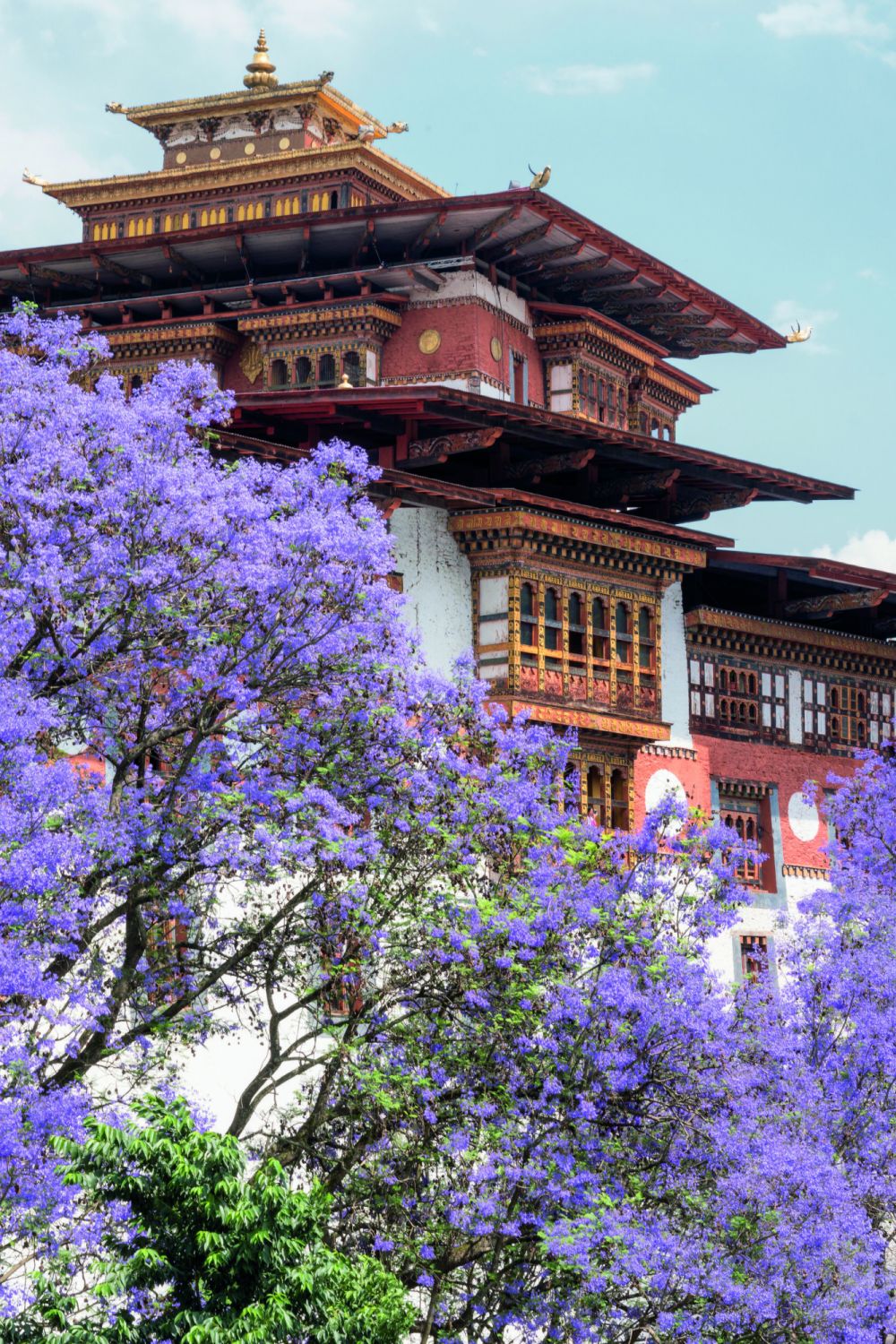On a recent visit to celebrate the reopening of the historic Trans Bhutan Trail, Tatler hiked through the rugged Himalayan mountains, met a prince, and learnt what happiness really looks like
Chimi Dema traversed the Trans Bhutan Trail before she was even born. Her mother, four months pregnant, carried her in her belly as she made a four-day pilgrimage to Chimi Lhakhang, known as the fertility temple, in west Bhutan’s Punakha valley.
Having miscarried before falling pregnant with Chimi, she was taking no chances and went to seek a blessing for a healthy pregnancy.
Chimi explains this as we stroll through emerald-green rice fields leading to Sopsokha, a village that sits at the foot of Chimi Lhakhang. At about a 30-minute walk from the car to the temple, it’s a significantly shorter, and far less precarious trek compared to the four-day journey—in both directions—her mother endured.
It’s also a reminder that tales from the trail aren’t far-flung legends, but living memory for many Bhutanese, including Chimi, who was assigned to Tatler as a guide during our stay in Bhutan. Visitors to the country are required to have a tour guide when visiting cultural and religious sites, which was admittedly off-putting at first. But spending time in Bhutan simultaneously lifts and thickens the veil on its mystery, and in a country as reclusive and mysterious as this, having someone that acts not just as a guide and translator, but also historian, storyteller and friend is priceless.

The Paths that Bind Us
Thimphu is the only capital city in the world without a single traffic light. “It’s too confusing,” Chimi quips, adding that traffic lights were installed once upon a time, but residents preferred to have policemen guiding traffic in busier areas, so all lights were taken down. And yet, the number of traffic accidents in the country is remarkably low. She adds, “It’s OK, we look out for each other.”
The preference for human interaction and “looking out for each other” is one of many things that are sacred in Bhutan.
Chimi, who still lives on the family farm where she grew up, tells me that she and many local families prefer to trade goods with one another rather than buy them. “Receiving money for goods is OK, but sharing our crops is what helps us stay connected. We prefer to meet and talk to each other,” she says.
Her family grows potatoes, chillis and cabbage, among other crops; she’d often bring apples, freshly picked from her orchard, to eat during our hikes. That generosity seems to be a national trait: along the trail, which passes through farms and villages, it’s been customary for centuries for locals to welcome weary travellers into their homes for a bite to eat and a place to rest.
See also: See Tokyo through the eyes of architect Kengo Kuma




